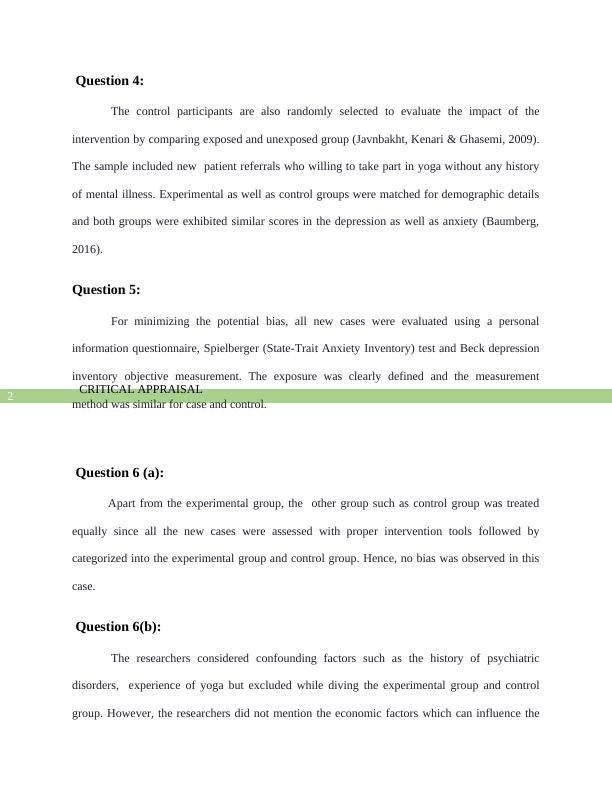Critical Appraisal of the Impact of Yoga on Depression and Anxiety in Women
Added on 2022-10-19
10 Pages2278 Words72 Views
End of preview
Want to access all the pages? Upload your documents or become a member.
Critical Appraisal of a Study on the Effects of Yoga on Depression and Anxiety in Women
|8
|2164
|387
Yoga as a Potential Treatment for Anxiety and Depression: A Study
|2
|604
|495
Effectiveness of Yoga in Managing Anxiety and Depression in Women
|8
|2229
|1
Yoga on Anxiety and Depression Article 2022
|4
|602
|6
Anxiety and Depression Case Study 2022
|4
|624
|29
Impact of Yoga on Depression and Anxiety Symptoms among Women
|6
|1642
|242



